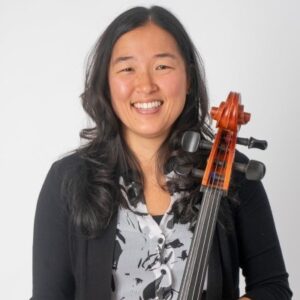Welcoming Future Educators with Diverse Immigrant Backgrounds – Perspective of a Mentor Volunteer


By Nicole Bell, Pathways to Teaching Project Mentor
This blog post is the first in a series that will focus on the Pathways to Teaching Project, which seeks to increase diversity in the U.S. teacher workforce and address teacher shortages by supporting multi-lingual and multi-talented adults with refugee and immigrant backgrounds in re/joining the teaching profession.
As a professional development specialist in the field of education in the United States, I am saddened but not surprised by the teacher shortages we are experiencing.
I want to scream, “Teaching is amazing!”
But I know it takes more than just a love of teaching. There are significant challenges to building a robust teacher workforce, including a lack of high-quality and affordable teacher prep programs that can bring new and enthusiastic talent into our profession.
I am excited to see promising shifts. The U.S. Department of Education announced the Raise the Bar: Lead the World initiative and is building partnerships with states and school districts in an effort to eliminate educator shortages. Grow Your Own initiatives, which focus on developing and retaining teachers from the local community, are popping up in school districts and offer a glimmer of hope.
Meanwhile, there is a growing emphasis on multilingualism as a superpower. The Seal of Biliteracy is now available in all 50 United States, and the Department of Education has launched a campaign to promote multilingual education for a diverse workforce.
Despite these efforts, I wonder: Are we ignoring the gifts of multilingual immigrant and refugee communities, including interested and/or experienced teachers? I believe there is more we can do to support refugees and immigrants in becoming teachers, which not only helps fulfill their goals and dreams but also helps fill the educator sector’s critical need for a larger and more diverse workforce and better serve students’ needs.
A few years ago, I had the privilege of piloting a refugee educator program through the Center for Professional Learning, which was then under the wing of the Carey Institute for Global Good and is now part of Childhood Education International. It was a wonderful use of my time, and I have been on the Childhood Education International mailing list ever since.
Like many of you, my email inbox is flooded with more emails than I have time to give my full attention to – professional organizations touting their latest professional development offerings, book publishers selling their products, and newsletters promoting the latest great thing in education. Last year, while writing a paper, I started to peruse my unread mail during a time of procrastination and avoidance. Then, by chance, happenstance, or fate, I came upon an email with the subject New Project Will Diversify the U.S Educator Workforce by Providing Pathways to Teaching for Refugees/Im(migrants).
Intrigued, I clicked on the “Read More” button. Immediately, I was enamored by the concept behind the new Pathways to Teaching Project and decided to submit a form committing me as a volunteer. If there are ways to get involved with the things I am the most passionate about (teaching and immigrants), I will.
The work that Julie Kasper, Meg Riley, and the rest of their team put into the Pathways to Teaching Program is incredible. I am grateful to have clicked on that email at just the right time.
I didn’t fully understand what I was getting into until the first whole-group meeting. Forty-five fellows who spoke many different languages popped up on my Zoom. It was beautiful chaos.
Julie, the fearless leader of this project, would be mid-sentence when a new person would pop up on the screen, unmuted, and loudly proclaim their gratitude for the program. I watched in awe as, each time, Julie paused, smiled warmly, and welcomed the new attendee. It was clear that this project was deeply important to the Project Fellows participating in it.
Since then, every interaction I have had with this project has been inspiring – from English classes with fellows who each week became braver about speaking out loud in front of their peers to sharing tears with refugees who told the stories of their journeys and their longing for home, and from helping mentees build resumes and to learning from the fellows.
There have been many opportunities for the Project Fellows to learn in this program, including workshops where diverse educators share their stories and journeys to teaching, help registering for the Praxis exam, and build background knowledge about teaching in the United States. Fellows set attainable goals and connect with mentors, all in a welcoming environment supportive of translanguaging spaces.
The Pathways to Teaching Program can be a model for anyone looking to build from the basics. This is what makes the Pathways program unique. Fellows are guided to create and follow through with goals – big and small – that lead them toward a career in teaching.
That doesn’t necessarily mean they will become certified teachers this year. Certification programs are incredibly important, but it is perquisite to understand how to begin this journey before embarking on it. That’s where the Pathways to Teaching Program comes in. If we don’t foster a love for teaching in the multicultural and multilingual world, we may not have a promising path to start the journey to certification. Without fostering this realm, we may miss out on some of the most promising future teachers.
This is what the field needs: a program that meets immigrants where they are and builds their skills and confidence to become educators. For some, it might be a few years before they can tackle certification tests or feel confident enough to apply for a teaching assistant job. For others, teaching was already their profession in their home country, but the circumstances that brought them here also created challenges to moving back into the field. For all, CE International’s Pathways to Teaching Program for Refugees/(Im)migrants is an opportunity to learn and grow together.
As you consider tapping into resources and funding to address the teacher shortage and build our collective love of teaching, take a good look at this unique, multilingual educator/learner-centered Pathways to Teaching Program.
Connect with the Center for Professional Learning and consider becoming a mentor (I promise, you won’t regret it!), or volunteer your time as a presenter.
If those options do not speak to you at this moment, think about building something similar in your own context. Develop a workshop to encourage immigrant educators in your community or connect with the Center for Professional Learning to learn about the model that was used and their hopes for the future of the program.
 Name: Nicole Bell
Name: Nicole Bell
Title: PD Specialist, Mid-West RBERN, Ed.D student- Molloy University-Leadership for Diverse Learning Communities.
Country/countries: United States
Nicole Bell has 17 years’ experience in education. She began her career in education as a music teacher before she decided to get her masters in TESOL at Nazareth College.
Today, she is an English language learner professional development specialist with the Mid-West Regional Bilingual Education Resource Network in Rochester, New York, and serves as the coordinator of the Oswego METs migrant summer school. Nicole spends her time building capacity of schools, teachers, and families in topics such as culturally responsive teaching, bilingual techniques in the classroom, the Latinx student experience, and migrant education.
Nicole is currently pursuing her Ed.D in the leadership for diverse learning communities program at Molloy University, where she is focused on researching equitable engagement of Latinx families.
Childhood Education: Innovations is a bimonthly magazine dedicated to sharing unique, interesting, and stimulating information from schools and learning environments around the world. Whether you are facing specific challenges in your work or simply want to stay informed about the most recent ideas and innovations in childhood education, you will find inspiration and ideas in this education publication.
Articles can be accessed by paying a one-time download fee per article using the links below, or by subscribing. Subscribers receive new issues and access to more than 100 years of back issues.
The Journal of Research in Childhood Education is an academic journal the presents peer-reviewed education research on a wide range of ideas, including theory articles and studies on all scales. From empirical research projects to small-case studies carried out in naturalistic settings, such as schools and community centers, articles track data across cultures and study research design.
Articles can be accessed by paying a one-time download fee per article using the links below, or by subscribing. Subscribers receive new issues and access to back issues.
Childhood Education International is dedicated to ensuring that displaced, refugee, and (im)migrant children and youth have access to quality, holistic education for that builds on their strengths, supports their needs, and offers opportunities to build bright futures.
The Center for Professional Learning supports educators and other education leaders working in refugee displacement, migration, crisis, and resettlement contexts around the world.
Recent highlighted projects include: